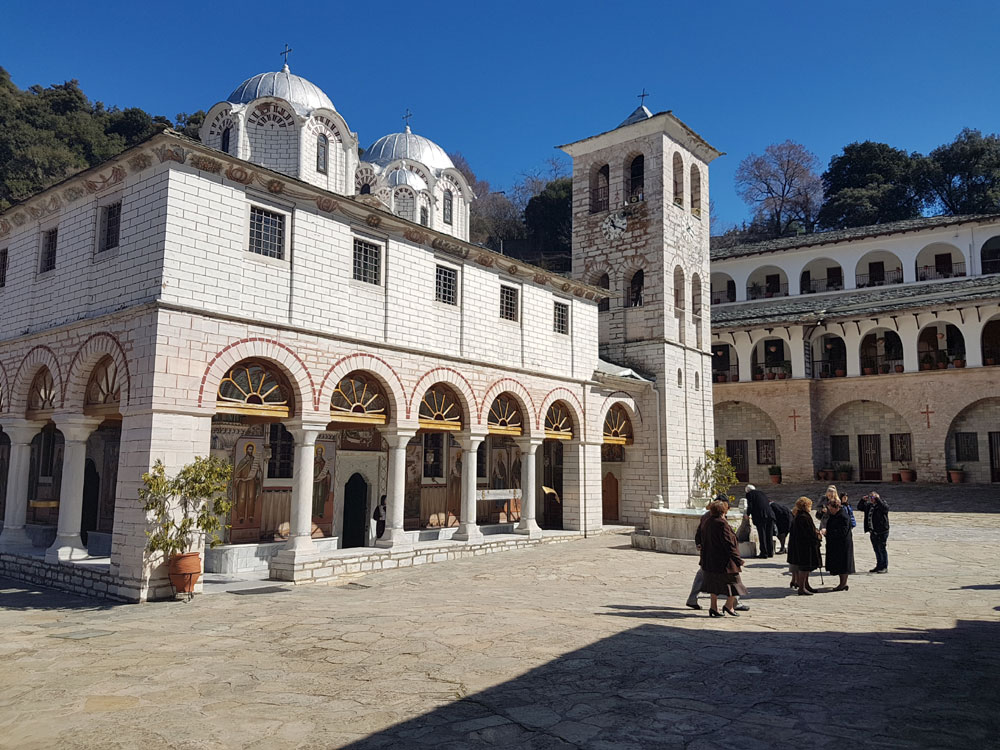
#Tags:
δράμαmonasteryRare hand-written gospel stolen in 1917 to be returned to monastery in NE Greece

File photo: Τhe historic monastery of the Virgin Eikossifinissa, on Mt.Pangeon. photo: ANA – MPA
One of the oldest extant hand-written gospels, written in Greek between the end of the 10th century and the start of the 11th, is on its way to being returned to the monastery it was stolen from in northeastern Greece by its latest owner, a museum in Washington, DC, the Metropolis of Drama said.
The document was stolen in 1917 by the Bulgarian occupying army from the historic monastery of the Virgin Eikossifinissa (“the luminous red one”), built on Mt. Pangeon, and it is the second manuscript after the 9th-century Codex 1424 to have been returned to the monastery. The codex was returned in 2016 by the Lutheran School of Theology in Chicago.
The recently identified manuscript includes miniatures and depictions of the Evangelists, and is written in two colums with 27 lines per column. The columns measure 18.1 cm by 14 cm.
Following a circuitous route, the 10th-century vellum gospel ended up at the Museum of the Bible in Washington, DC which notified the Ecumenical Patriarch Bartholomew in January that it was one of the objects stolen during World War I. Bartholomew, the Metropolis said, allowed the museum – which receives a million visitors a year – to exhibit the manuscript until October 2021 and will also lend another three manuscripts from the patriarchate as a gesture of good will.
According to the background provided by the Metropolis, which also thanked Bartholomew for his efforts to repatriate all stolen artefacts from the monastery, Bulgarian soldiers raided the monastery in March 1917 and removed the entire monastic library holdings, including over 430 manuscripts and 470 objects, among them icons and Greek Orthodox ritual objects. Many were sold in the 1920s and found their way into collections in Europe and the United States.
The 10th-century gospel was sold in New York City in 1958 and bought by the Museum of the Bible at a Christie’s auction in 2011. During research, curator Brian Hyland identified the manuscript – known as “Manuscript Eikosiphoinissa 220 – through notations in it, a painstaking effort detailed to the Ecumenical Patriarch by Museum respresentative Dr. Jeff Kloha, who paid him a visit in Istanbul to tell him of the finding.
Source: ANA – MPA

